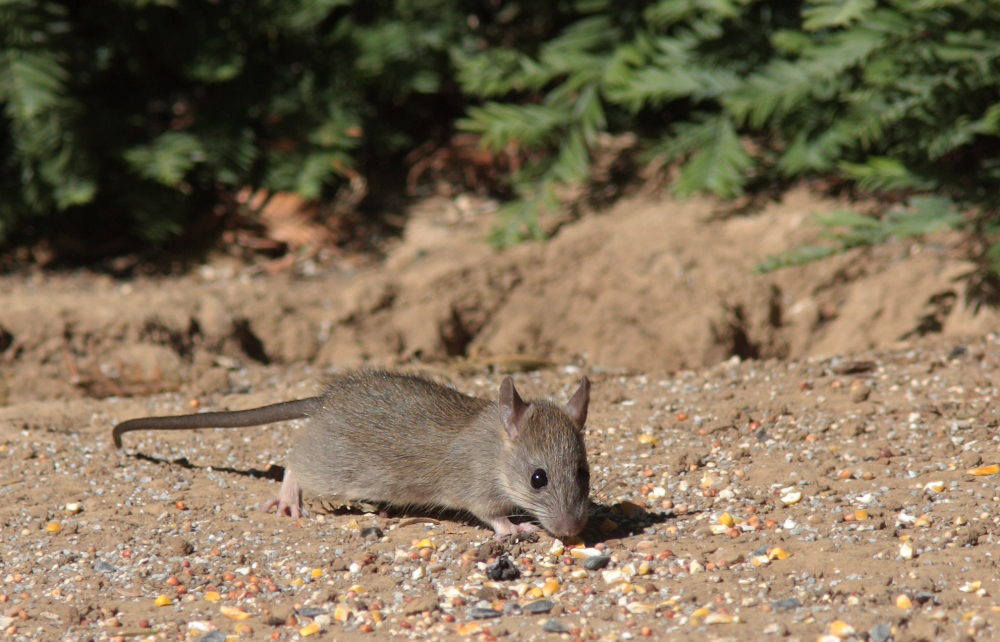
Along with other woodrats in the genus Neotoma, the dusky-footed woodrat is also commonly known as the “pack rat” because of its hoarding habit.
FAMILY
Cricetidae, the second largest mammal family
RANGE
Baja California to Oregon
Important Environmental Factors

Low to moderate variation in seasonal temperatures

Below 500 meters

Low levels of paved or compacted ground
Appearance
Named for their dark-colored feet, dusky-footed woodrats can be distinguished from other rats by a furry tail. The average woodrat is about 16 inches in length, and this tail makes up most of their body length.
Habitat and Behavior
Dusky-footed woodrats inhabit the thick underbrush of riparian woodlands, oak and conifer forests, and dense chaparral cover. They are mostly nocturnal and forage at night for various plants, seeds, nuts, and fungi, which they often bring back to their nests. These nests can be up to five feet tall and eight feet wide. Constructed out of sticks and other materials, they are often lined with California bay laurel leaves, the scent of which may help to keep away ticks and mites. These houses may be used by several generations of the same woodrat family, and once abandoned, the nests are sometimes inhabited by other small mammals, amphibians, lizards, and snakes.
Current Status
Out of 11 subspecies of dusky-footed woodrat, only the riparian woodrat (Neotoma fuscipes riparia) is federally endangered, mainly due to habitat loss. Grazing and the removal of undergrowth and dense vegetation can also be problematic for the other sub-species, but are not major threats.
Data source:
Species records provided by iNaturalist